Rare Rides Icons: The History of Imperial, More Than Just a Car (Part VIII)

We continue our Rare Rides Icons series on Imperial today. Starting in 1957, Chrysler’s then-separate luxury arm spent more and more time on bold styling, and less on the hand-built quality for which the company’s first cars in 1955 and 1956 were known.
The Imperial’s body-on-frame platform was used only on seventh-generation Imperials for its entire tenure from 1957 through 1966. Eventually, Chrysler assigned it a name, the D-body. Though quality dropped over the prior model, the ’57 D-body Imperial racked up almost 38,000 sales in its first year. It was the best year Imperial would ever have.
Imperial edited the D-body in every year of its production, with varying degrees of success. The year-to-year changes were always assigned new Series numbers, as Imperial had done for decades. The 1958 Series was the LY1, with not-so-subtle indicators for trim of L, M, and H. Imperial featured only minor changes this year as it came off its sales high in 1957. A new front grille and bumper were the only changes that year: The egg-crate grille made way for a segmented radiator-type look, while bumpers got smoother and chunkier, and implemented circular lower turn signals. Quad headlamps were legal in all states and found their way onto all Imperials and the Corvette in 1958.
There were two notable technology advancements for 1958, Auto-Pilot and optional power door locks. Auto-Pilot was Chrysler’s name for cruise control, and the company was first to offer it on production cars. It was introduced on Imperial as well as larger Chrysler models that year (New Yorker, 300, Saratoga, Windsor). The system was invented in 1948 by blind engineer Ralph Teetor. Teetor came up with the idea after frustration when his driver sped up and slowed down during conversation in the car. Patented in 1950, Teetor’s “speedostat” used a control dial on the dash that calculated speed via the rotating speedometer cable. Shortly after Chrysler introduced Auto-Pilot on its cars, Cadillac bought into the system and marketed it as cruise control.
Sales fell by 58 percent in 1958 (to 16,133), as America went through a recession. According to dealers, part of the problem was the brand’s close association with Chrysler, and a bad habit buyers had in calling their cars Chrysler Imperials. Imperial was sold at Chrysler dealers and was thus not quite as prestigious as Cadillac and Lincoln who had their own dealers.
In 1959 Imperial production moved from the traditional Jefferson Avenue location to Warren Avenue, still in Detroit. Warren previously built DeSotos but became a dedicated facility just for Imperial. The change was a direct response to the sales success the brand experienced in 1957. Chrysler expected there would be quality improvements with a dedicated Imperial plant, as well as better brand differentiation. 1959 cars were Series MY1 in L, M, or H guises, and showed few changes over the prior year. Hood trim stretched further toward the windshield, and body side trim was thicker than before and ended with a chrome panel at the rear bumper.
Radiator-style grilles were replaced by an even more chromed grille with six large vertical strakes. A new roof style was optional, called Silvercrest. The front portion was stainless steel on Silvercrest, with a rear painted metal panel available in several colors. That panel could be upgraded to the Landau option, where it was black vinyl of a leather texture.
Notable technology advancements for 1959 were the short-lived swivel front seats, which pivoted to allow easier entry and egress. The seats were lever-activated in 1959, but in 1960 were made automatic and operated when the door opened. Occupants automatically being pushed toward the door as soon as it opened turned out to be a safety issue, so the feature was made manual again very quickly. Manual swivel seats remained so for 1960 and 1961 before the feature was dropped. For 1959 there was no longer a Hemi in Imperials, as the 392 cubic-inch (6.4L) was replaced by a 413 cubic-inch (6.8L) Wedge V8. The engine was cheaper to make, but lighter and more powerful than the old Hemi.
Customers didn’t care much about the cheaper engine and bought 17,710 Imperials that year – more sales than Lincoln. The American luxury car market got a bit less crowded, as ’59 was the last time anyone ventured into a Packard showroom to buy a gussied up Studebaker.
But those who ventured into their Chrysler-Imperial showroom in 1960 were in for a shock. Imperial was redesigned and featured very unusual and exaggerated styling. Virgil Exner was still in charge of Chrysler’s design office but was having more and more trouble at work. The PY1 L, M, and H were most notable for their front fascia, which featured a slanted chrome bumper that dropped to a V in the middle. A strainer-type chrome grille wrapped around the front of the car with a similar V shape, and the hood ended in a large chromed Imperial eagle logo. Heavy chromed eyebrows came down over the top of the headlamps. Chrome hood line trim extended the full length of the car, which now had even more exaggerated rear fins.
The look was excessive from all angles. Imperial had grown in length with every passing model year, from 224.4 inches in 1957 to 225.9 in 1958, and 226.3 in 1959 and 1960. And though the 1960’s length was the same as the prior year, the body shifted forward with the redesign. The rear overhang was reduced by 2.1 inches, but that measurement was moved to the front. With the redesign, the top trim Imperial LeBaron had a smaller rear side window, intended to improve privacy for rear-seat passengers.
To match the new exterior ’60 Imperials used a new dash design, with electroluminescent gauges. There were no incandescent bulbs in the dash, but rather voltage ran through a laminate surface of five layers. That caused the phosphorescent ceramic layer inside to glow. The end look was a fascia of a blue-green color, with very defined red needles. Marketed as Panelescent, the feature was also used on some higher-end Chrysler models that year. There was also a new seat design for the driver, called the High-Tower. The driver’s seatback was taller than the rest of the bench seat and contoured to fit the driver’s shoulders.
With its outlandish new looks, Imperial sales increased (barely) in 1960 to 17,719 cars. The rest of the Chrysler lineup moved unibody that year, but Imperial was less than halfway through its body-on-frame D-body era. But things would get worse before they got better, and Exner was not yet finished adding his very personal styling touches to Imperial. More next time.
[Images: Imperial]

Interested in lots of cars and their various historical contexts. Started writing articles for TTAC in late 2016, when my first posts were QOTDs. From there I started a few new series like Rare Rides, Buy/Drive/Burn, Abandoned History, and most recently Rare Rides Icons. Operating from a home base in Cincinnati, Ohio, a relative auto journalist dead zone. Many of my articles are prompted by something I'll see on social media that sparks my interest and causes me to research. Finding articles and information from the early days of the internet and beyond that covers the little details lost to time: trim packages, color and wheel choices, interior fabrics. Beyond those, I'm fascinated by automotive industry experiments, both failures and successes. Lately I've taken an interest in AI, and generating "what if" type images for car models long dead. Reincarnating a modern Toyota Paseo, Lincoln Mark IX, or Isuzu Trooper through a text prompt is fun. Fun to post them on Twitter too, and watch people overreact. To that end, the social media I use most is Twitter, @CoreyLewis86. I also contribute pieces for Forbes Wheels and Forbes Home.
More by Corey Lewis
Latest Car Reviews
Read moreLatest Product Reviews
Read moreRecent Comments
- Ajla IMO, something like this really should be naturally-aspirated.
- Kjhkjlhkjhkljh kljhjkhjklhkjh Unless they are solid state batteries you BAN THEM. I like EVs... but EVs like to burn ... for days
- Kjhkjlhkjhkljh kljhjkhjklhkjh uh .. it looks like a VW golf got the mumps
- Kjhkjlhkjhkljh kljhjkhjklhkjh I CANNOT WAIT FOR SOCIAL SECURITY TO GET GUTTED.. No i am really serious. I am insulated thanks to 24 years at Symantec then Broadcom .. tons of retirement cash. but all the blue hairs and low income trump voters are going to lose benefits and jobs and i get to laugh allllll dayyyyy long in about 2-3 years.. CANNOT WAIT, POPCORN READY.
- Kjhkjlhkjhkljh kljhjkhjklhkjh no. to many '''''americans'''' just want a CUV or SUV according to sales numbers



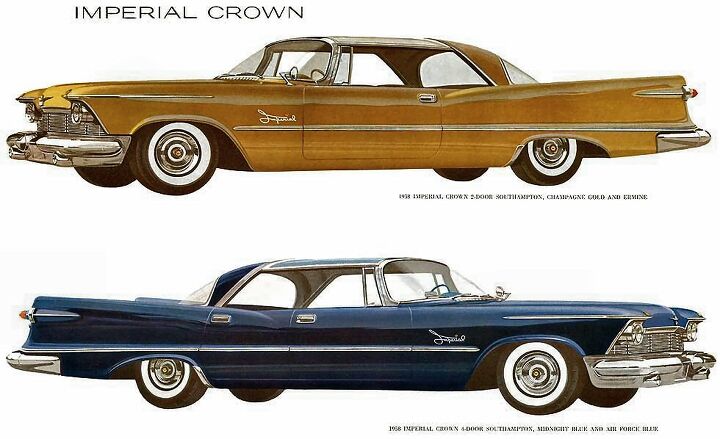




























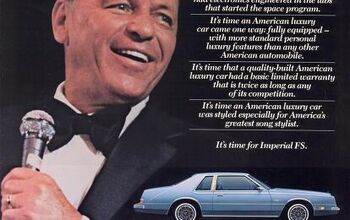
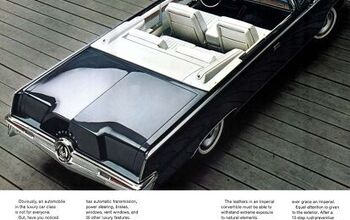
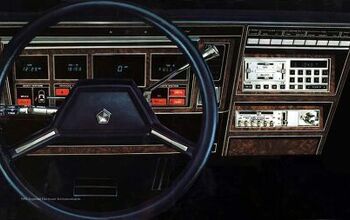
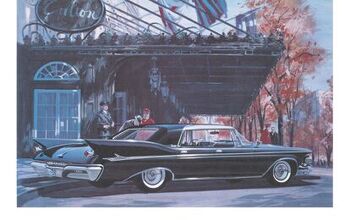











Comments
Join the conversation
I'm excited for this next installment, I owned a '62 Imperial 2 door HT, with the Electroluminescent gauges which were pretty darn cool. Mine had the pod headlights someone mentioned here.. it was a fantastic car. Best classic I ever owned.
This was just what I was looking for! Do you mind if I link to it in a post about the ad campaign for the 1960 Imperial? This features Nina Ricci dresses, Elizabeth Arden cosmetics and Saks Fifth Avenue in the January 15, 1960 Vogue, which I am writing about for my new Substack, Reading Vintage Vogue. (Not live yet.)